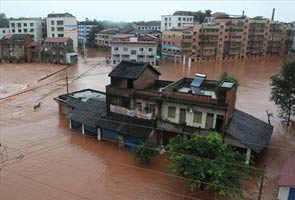NEW DELHI The power crisis that hit northern India on Monday turned into a larger blackout a daylatertoaffectasmanyas19 states not just in the north but also in the east and northeast, paralysing essential services such as rail and metro operations,besidescausingmassive trafficsnarls.
"Gridincidentoccurredat1 pm, affecting the northern, eastern and northeastern grids. The system is under restoration," said the official website of the eastern grid, among such systems managed by the state-run Power System OperationCorpLtd.The states affected on Tuesday were Jammu and Kashmir, Himachal Pradesh, Punjab, Haryana, Delhi, Rajasthan, Uttar Pradesh, Bihar, West Bengal, Odisha, Jharkhand, Sikkim, Assam, Meghalaya, Tripura, Nagaland, Manipur, Mizoram and Arunachal Pradesh.
These states account for half of India's 1.2 billion population.
Power Minister Sushil Kumar Shinde, who had constituted a committee to probe the failure on Monday, attributed the collapse on the second straight day to overdrawing of power by some states and said efforts were on to fetch electricityfromotherregions.
"Alternative arrangements have been made. I have put all my men at work. We are getting power from western grid. Wewilltrytorestoreservicesof the Metro and the railways first,"Shindetoldreporters.
There was, however, little respite for some 300,000 rail passengers, who were stuck in over 300 trains across eight states, after the power failure crippled such operations across six railway zones in the country.
The Delhi Metro suspended services on all the six lines as power tripped for the second straight day. It normally operates over 2,700 trips a day, coveringatotalsome70,000km,to carry around 1.8 million passengersonaweekday.
In the national capital, and inmostothercities,trafficwas also severely affected as traffic signals tripped and caused major snarls at intersections. Some 4,000 traffic police personnel in Delhi were immediately deployed to bring some semblanceoforder.
Flights operations remainednormal.
Speaking to reporters in the evening, chairman and managing director of Power Grid Corp of India R N. Nayak, said close to 50 per cent of power had been restored in the northeastern region and 20 per cent inthenorth.
Nayak also said excess powerdrawnbyonestatehadacascading effect on the three grids. He, however, did not name which state had overdrawn power. The officials said every effort was being madetorestoresuppliesfully.
AGENCIES

At least 300 trains came to a grinding halt at various places in north and north-eastern regions due to the power failure, movement on the busy Delhi-Howrah route almost paralysed.
The affected trains included scores of long distance trains, Rajdhani and Shatabdi expresses, as well as suburban trains in Delhi and Kolkata, causing inconvenience to lakhs of passengers.

Traffic was thrown out of gear in the capital this afternoon when signals went blank following power failure across north India.
Huge traffic jams were reported from various parts of the capital, including Connaught Place, Ashoka Road and India Gate. "The city is without electricity in most of the areas. Traffic signals are not functioning due to power failure, said a top traffic officer.

Following the crisis, West Bengal CM Mamata Banerjee ordered all government offices to declare a holiday for the day and urged the private sector to the same to enable the people to go home and appealed to people to maintain calm.

KOLKATA Hundreds of coal miners were stranded on Tuesday in various coal mines across Assam and West Bengal after the blackout paralyzed elevators in the underground pits.
While 100 workers got stuck several feet below ground level in Assam, nearly 200 workers from government-owned Eastern Coalfields Limited were waiting to be rescued from mines in Bengal's Burdwan district .
Nildari Roy, a senior official at Eastern Coalfields Limited said they were waiting for the restoration of power. "There is no threat to the lives of the miners. There is no reason to panic," Roy said.
JAYATRI NAG




































